If you’re wondering which destinations to add to your Hungary itinerary, or exactly how much it’s possible to see in a week, then this post is for you! Read on to discover where we chose to visit and what there is to see and do in each of those places.
Some of the links in this post are affiliate links. All this means is that if you make a purchase through one of the links I have provided, I will earn a small commission as a result but the cost to you will remain exactly the same.
Visiting a new country for the first time can be overwhelming, especially when you’re short on time. And when you have to arrange your trips around the limited amount of annual leave you’re afforded by the company for whom you work full-time, the time you have to explore your chosen country becomes even more precious.
You want to see and experience as much of that country as you can, but you’re not sure where to start when it comes to building an itinerary that’s logistically viable and at the same time will present you with a diverse cross-section of sights and activities to enjoy.
Hungary is a country that’s very easy to reach from the UK. A number of budget airlines will fly you to Budapest or Debrecen and back for less than the price of a train ticket to visit friends just 230 miles away in the UK. And because Hungary hasn’t get adopted the euro, the cost of living there is significantly cheaper than many other European countries.
So if you’re thinking of visiting but are short on time, here’s a tried and tested seven-day itinerary that will introduce you to the country’s capital city, as well as its wine-growing region, a town that sits on the western shore of the largest lake in central Europe, and one of its lesser-visited cities that’s located on the slopes of the Mecsek mountains in the south-west of the country.
Hungary has an efficient and reliable rail network, which we used to travel between the destinations shown on the map below.
A Seven Day Hungary Itinerary
Budapest – Three Nights
Book yourself into Lavender Circus, a quirky, centrally located hostel opposite the Hungarian National Museum that’s within easy reach of metro, tram and bus lines. Lavender Circus has double and en-suite rooms available, and the unique decor, cosy atmosphere, and lovely staff all help to make it feel more like a home than a hostel.
Straddling both banks of the beautiful Danube, Budapest is a beautiful city that offers a wonderful mix of grand architecture, fine museums, leafy parks, fantastic food, and a buzzing nightlife.
Don’t miss…
Ruin Bars
As much a part of Budapest’s culture as its nightlife, Ruin Bars – or Romkocsma, as they’re known in Hungarian – began to appear in the ruins of abandoned buildings back in 2001. Rather than spending huge amounts of money to renovate these old, crumbling structures, ruin pub owners celebrated their decay by decorating them with rejected, mismatched furniture (you’ll find also bicycles hanging from the ceilings of Szimpla Kert, and a rusty old mini with its bonnet hollowed out to create a bench seat), and invited local artists to make their mark on the walls.
Vajdahunyad Castle
Built in 1896, and amalgamating Romanesque, Gothic Renaissance, and Baroque architectural styles, it’s located on Széchenyi-island in Városliget, in the northern part of the city.
St. Stephen’s Basilica
Budapest’s largest church, St. Stephen’s Basilica houses Hungary’s most sacred treasure, St. Stephen’s mummified right hand. There’s a small, but interesting museum on the second floor, and if you climb to the top of the dome, you’ll be rewarded with some incredible city views.
Dohany utca Synagogue
Built in 1859 in a mix of Moorish and Romantic architectural styles, Budapest’s Great Synagogue houses the Hungarian Jewish Museum, Holocaust Memorial Room, and the beautiful Holocaust Memorial itself – a tree of life constructed entirely of metal and featuring the family names of some (there are hundreds of thousands altogether) of the victims.
Parliament Building
The Hungarian Parliament Building is currently the largest building in Hungary, the highest building in Budapest, and the third largest parliament building in the world (how’s that for superlatives?). It’s a magnificent example of Neo-Gothic architecture and looks absolutely incredible after dark, when the entire structure is illuminated.
Thermal Baths
Budapest sits on a network of almost 125 thermal springs, so bathing here has been an intrinsic part of life for centuries. The most visited baths in the city are the Széchenyi Thermal Baths, housed in a large yellow building that looks like an ornate Baroque palace. There’s a large outdoor pool where you can watch men playing chess while immersed up to their chests in steaming spring-fed water.
However also consider the Art Nouveau style Gellért Baths – the most beautiful and elegant spa in the city – and the Rudas Baths (one of the oldest thermal baths in Budapest).
Photo by Sergey Melkonov via Flickr
Varhegy (Castle Hill)
Várhegy (also known as Castle Hill or the Castle District) is a kilometre-long limestone plateau located 170 metres above the Danube, on the Buda side of Budapest. The views from up here are as photo-worthy as the attractions themselves – which include the Liberation Monument, the Royal Palace, and Buda Castle.
Read more about Budapest here
Eger – 0 Nights (Day trip from Budapest)
Nestled in a fertile valley in the Bükk Hills, Eger is a picturesque town in northeastern Hungary that’s filled with beautiful, well-preserved Baroque architecture and cobbled streets.
Don’t miss…
The Valley of the Beautiful Women
Most people who visit Eger come here to sample the wine (we were certainly no exception!). You’ll find over 200 wine cellars in the Valley of the Beautiful Women, located a short 20-minute walk from the main square. Don’t leave without sampling Egri Bikavér (“Bull’s Blood”), one of the most revered reds in the region.
Eger Castle
Constructed in the 13th century after the Mongol invasion, Eger Castle is historically known for repelling Turkish attack in 1552 during the Siege of Eger. Although much of the castle now is a modern reconstruction, it’s a lovely spot that offers fantastic views of the city.
Turkish Minaret
This 40-metre high minaret is one of the few reminders of the Ottoman occupation of Eger. There are 97 steps to reach the top (if you’re claustrophobic then avoid the climb; it’s the narrowest tower I’ve ever squeezed inside!), and the views are incredible.
Read more about Eger here
Keszthely (Lake Balaton) – One Night
Keszthely is a city of grand town houses perched at the very western end of Lake Balaton, and is, in my opinion, one of the loveliest spots to stay in order to explore the lake.
Don’t miss…
Lake Balaton
Despite being overrun with tourists in summer, Lake Balaton is the main reason people find themselves in Keszthely. It’s a freshwater lake and is also the largest lake in Central Europe, measuring almost 80 kilometres in length and having a surface area of 592 square kilometres.
Whilst I’m not really one for sunbathing, I did love paddling around in the lake’s cool waters foraging for mussels (the lake bed is literally covered in them!) and seaweed.
The charming streets of Keszthely
With a handful of museums and historic buildings (the most impressive of which is Festetics Palace), as well as a significant number of inviting restaurants, cafes and market stalls, Keszthely is much more than the lake upon whose shores it rests.
We stayed at Guest House Moritz which is walking distance from both the shores of the lake and the centre of Keszthely, and offers double rooms from just £28 per night.
Pécs – One Night
We missed our connecting train in Kaposvár (our own fault; we were on the wrong platform when it departed!), so we were able to have an unexpected wander around another of Hungary’s attractive cities before heading back to the train station an hour and a half later to continue on to Pécs.
Located in southeastern Hungary in between the Danube and Dráva rivers, on a plain sheltered from the northern winds by the Mecsek Hills, Pecs enjoys its very own microclimate, which is perfect for fruit production. True to form when we visited at the end of June, the temperatures were lingering around a very toasty 40 degrees.
Pécs is an elegant, multicultural city that was awarded the title of The European Capital of Culture in 2010, sharing that title with Essen and Istanbul.
Don’t miss…
Belvárosi plébánia templom (Mosque Church)
Located in Széchenyi tér (Pécs’ main square), this unusual square-shaped mosque with a green copper dome was built by the Turks in the 16th century. It’s now used as a Parish Church so you’ll see both Islamic and Catholic elements to the present-day structure.
Basilica of St. Peter
Whilst the foundations of the four-towered basilica date back to the 11th century, most of what you see today of the neo-Romanesque structure is the result of renovations carried out in 1881. It’s still an impressive building though and looks even more dramatic when its illuminated at night.
Calvary Hill
Just north of Pécs’ historic centre, Calvary Hill is THE place to come for the best views of the city. There’s also a small neoclassical round chapel on the site.
Love locks on Janus Pannonius Street
Whilst you’ll usually find love locks on bridges (think Paris, Cologne, Ljubljana), couples began to attach them to fences along one of Pécs’ innocuous backstreets. No-one has any idea when this began and why but it’s a pretty unique sight to behold.
We stayed at Nap Hostel, located on one of the main pedestrian streets in Pecs’ historic centre. This colourful hostel offers dorms from £7 per night, or private rooms with shared bathrooms from £31. There’s also an on-site café/bar and 24-hour front desk.
Budapest – One Night
You’ll need to come back to Budapest for your flight back home, and if (like us) you have low-level paranoia about missing your flight if you have a long distance to travel on the day of said flight, you’ll want to make sure you’re already in your departure city the night before.
Plus it gives you the opportunity to tick all those things off your itinerary that you didn’t get around to seeing/doing when you first arrived.
We chose to stay in a different part of the city this time around, purely because we wanted to experience somewhere new. The hostel we decided upon was GoodMo House which is located in Józsefváros, traditionally a craftsman’s neighbourhood that is now undergoing a surge of redevelopment. It’s a little less central than Lavender Circus, but you’re still only 250 yards from the nearest metro station.
Practical Info
- Most hostels will be able to provide you will information and timetables regarding your onward travel. Alternatively check out Rail Guru for up-to-date train schedules.
- If you fancy doing some more research on the country then you can buy Lonely Planet’s latest Hungary guide here.
- All prices I’ve quoted within this post were correct at time of writing. If you want to check current prices, just click on the relevant links.
If you like this article, please please share it on social media using the share buttons at the top of the post. Alternatively you can follow along on Facebook, Twitter, or Google+ or you can look me up on Instagram or Pinterest too!
PIN ME!!!



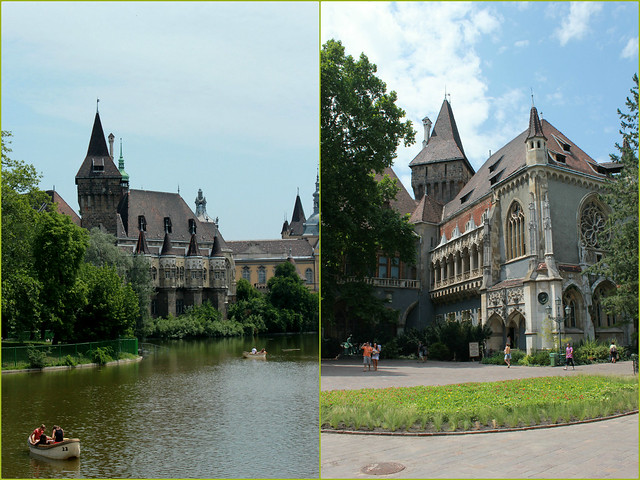


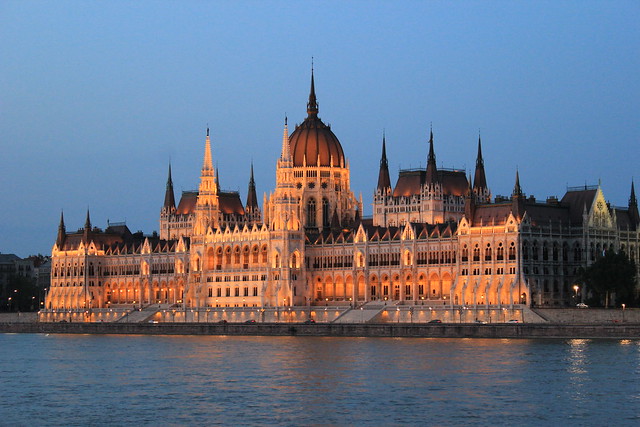
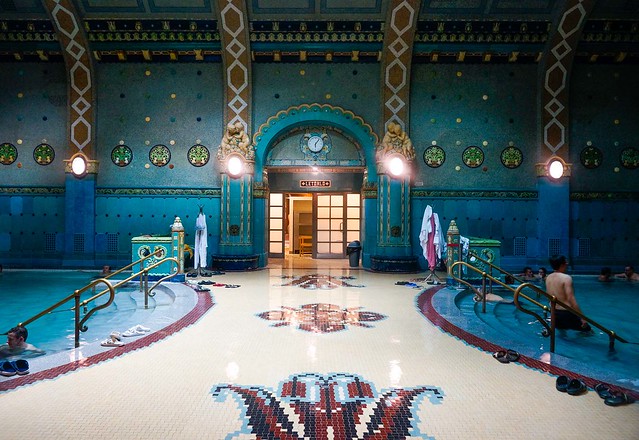

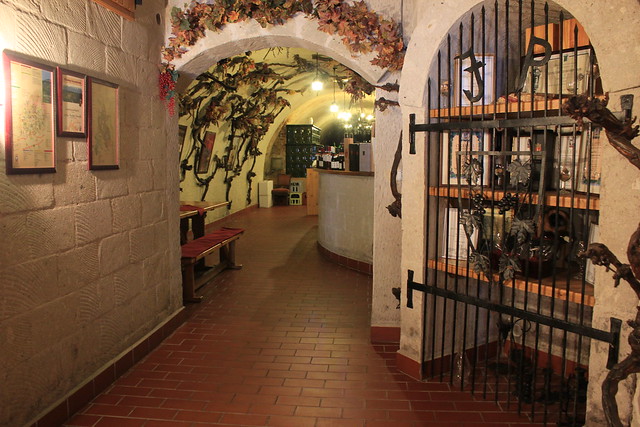
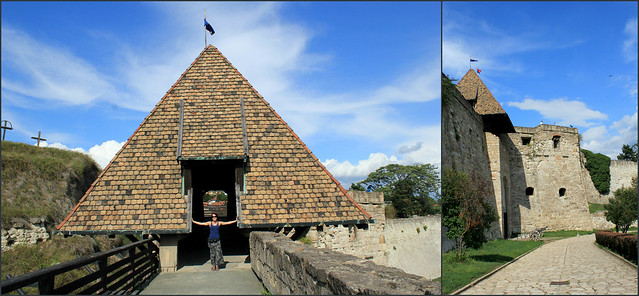
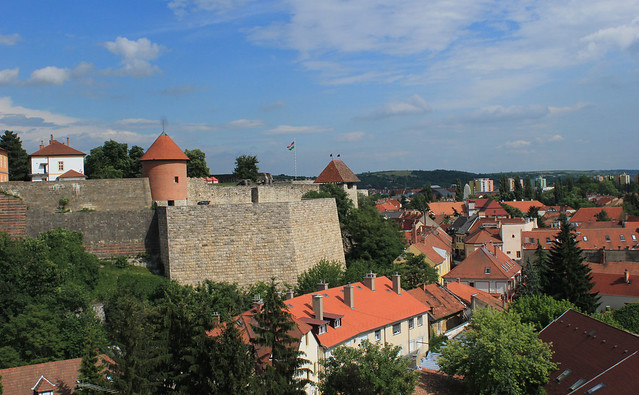
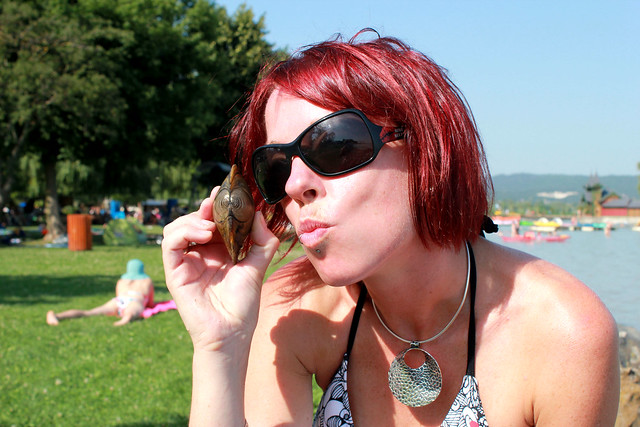
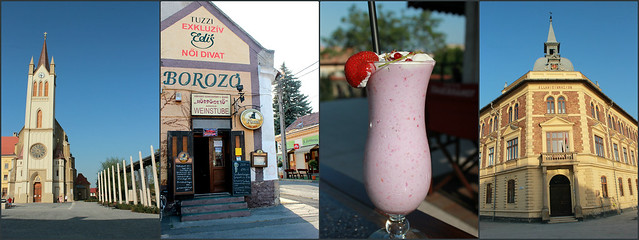
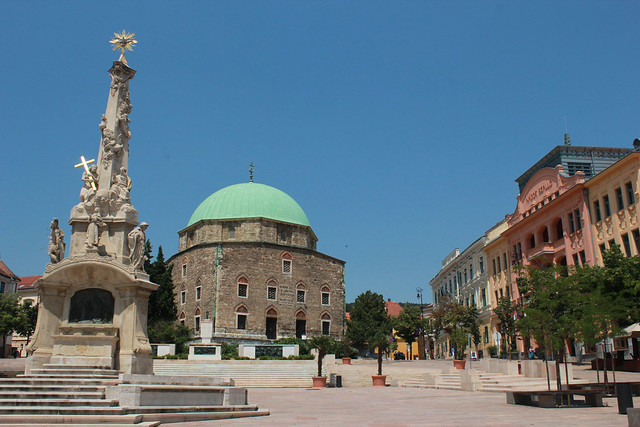
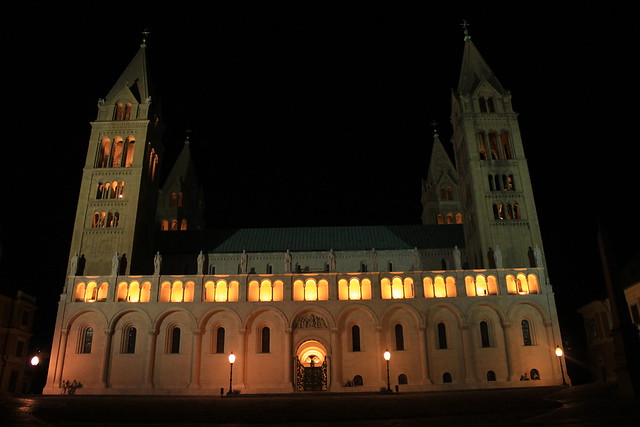
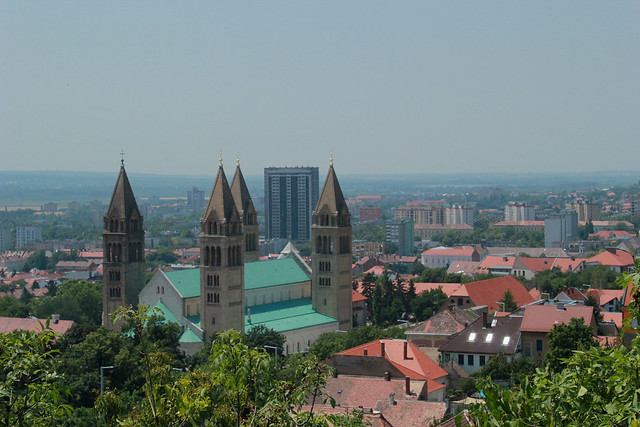








6 Comments
Yes! This is just what I was looking for. I’m doing a 3 week Hungary-Romania trip in 2017 and I’ve been trying to decide how to split up the time. How was getting around with English outside Budapest? Easy enough? I can get by in Russian too but I feel like they’d take a lot more kindly to English speakers these days. Try as I might with it, Hungarian is a really crazy language.
Glad you found it useful Erica! I didn’t have any problems with language barriers outside of Budapest, most people we met spoke excellent English 🙂 Where are you planning to visit in Romania? I spent a week there in July and absolutely loved it!
For Romania I was thinking a couple days in Bucharest, a week around Transylvania then some short visits to a couple of river towns on the Tiza, where my dad’s family is from. I found your post on Brasov, which I’m really excited about visiting 🙂
Oh that sounds perfect 🙂 It’s great knowing people (friends or family) who live in the country you’re visiting, as they introduce you to parts you may otherwise overlook. Brasov is lovely, I hope you enjoy it as much as I did!
can you guide about solo trip to Hungary.
1.stay
2.Places of attraction.
3.nightlife.
4.How do we generally make friends there.
An itenary for 7 Days
Hi Alex,
I didn’t travel Hungary solo so don’t really feel that I can guide about solo travel there. However, the country was easy to get around by public transport and I didn’t feel unsafe anywhere. I’d probably choose to stay in hostels if I was travelling solo, because you’ve got company on tap should you need it and they’re a lot more geared up for solo travellers, so that would be my answer about making friends too 🙂
Regarding places of attraction, I’d still recommend all those I visited as a couple; it entirely depends on what you personally enjoy doing. As for nightlife, I don’t tend to visit late night bars or drink a lot of alcohol if I’m alone, as I think it can be more risky as a woman (I tend to choose hostel bars instead or go with a group of people). However, if you’re male (as it appears you are from your email address), you may decide that risk is not as great. I’d probably choose low-key, sociable bars rather than busy/party type places. Hope that helps!